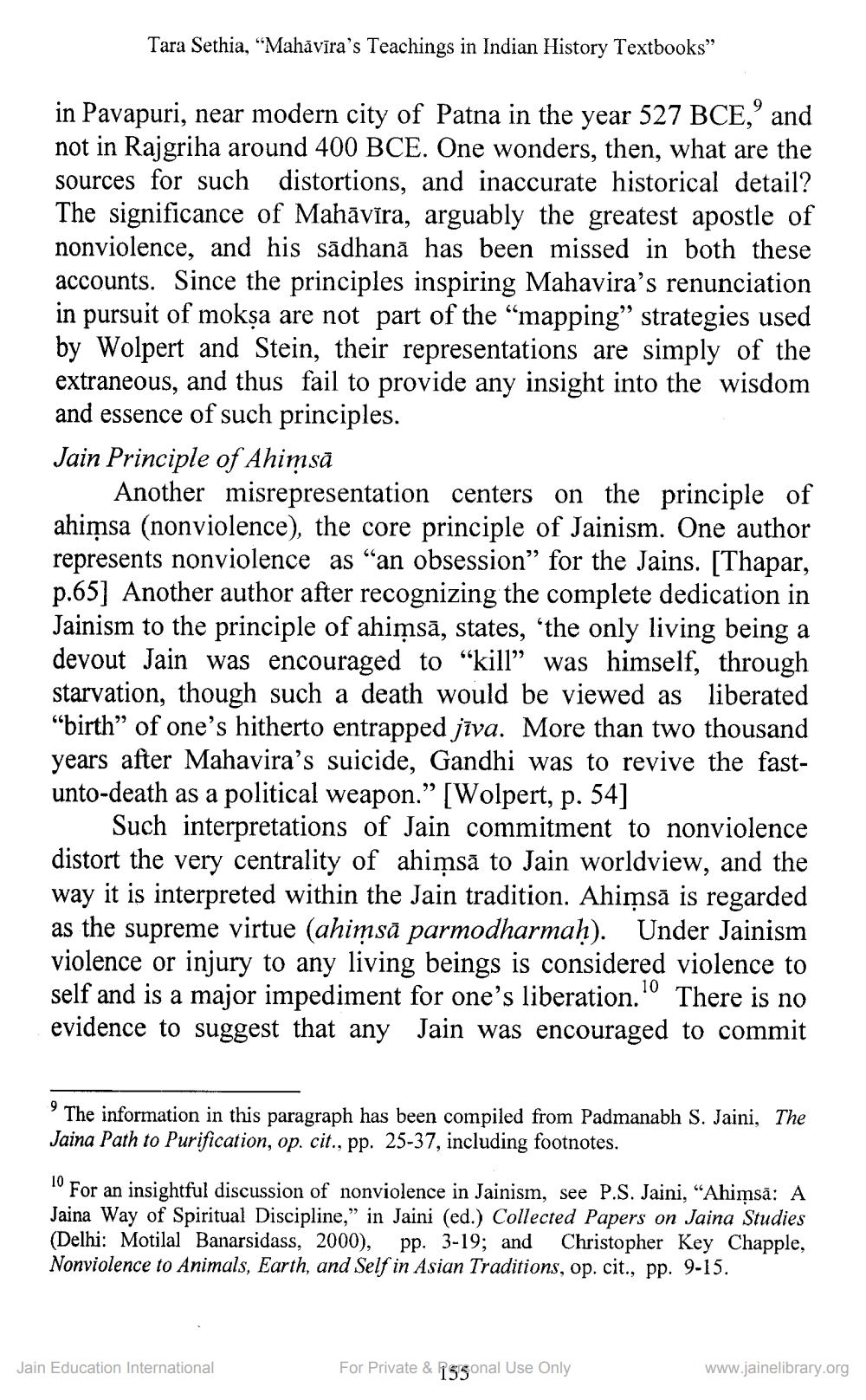________________
Tara Sethia, "Mahavira's Teachings in Indian History Textbooks"
in Pavapuri, near modern city of Patna in the year 527 BCE,' and not in Rajgriha around 400 BCE. One wonders, then, what are the sources for such distortions, and inaccurate historical detail? The significance of Mahāvīra, arguably the greatest apostle of nonviolence, and his sadhana has been missed in both these accounts. Since the principles inspiring Mahavira's renunciation in pursuit of mokṣa are not part of the "mapping" strategies used by Wolpert and Stein, their representations are simply of the extraneous, and thus fail to provide any insight into the wisdom and essence of such principles.
Jain Principle of Ahimsa
Another misrepresentation centers on the principle of ahimsa (nonviolence), the core principle of Jainism. One author represents nonviolence as "an obsession" for the Jains. [Thapar, p.65] Another author after recognizing the complete dedication in Jainism to the principle of ahimsa, states, 'the only living being a devout Jain was encouraged to "kill" was himself, through starvation, though such a death would be viewed as liberated "birth" of one's hitherto entrapped jiva. More than two thousand years after Mahavira's suicide, Gandhi was to revive the fastunto-death as a political weapon." [Wolpert, p. 54]
Such interpretations of Jain commitment to nonviolence distort the very centrality of ahimsa to Jain worldview, and the way it is interpreted within the Jain tradition. Ahimsa is regarded as the supreme virtue (ahimsā parmodharmaḥ). Under Jainism violence or injury to any living beings is considered violence to self and is a major impediment for one's liberation. There is no evidence to suggest that any Jain was encouraged to commit
9
The information in this paragraph has been compiled from Padmanabh S. Jaini, The Jaina Path to Purification, op. cit., pp. 25-37, including footnotes.
10
10 For an insightful discussion of nonviolence in Jainism, see P.S. Jaini, "Ahimsa: A Jaina Way of Spiritual Discipline," in Jaini (ed.) Collected Papers on Jaina Studies (Delhi: Motilal Banarsidass, 2000), pp. 3-19; and Christopher Key Chapple, Nonviolence to Animals, Earth, and Self in Asian Traditions, op. cit., pp. 9-15.
Jain Education International
For Private & Sonal Use Only
www.jainelibrary.org




